Art World
The 50 Most Exciting Artists in Europe Right Now, Part II
See who made our list this year.
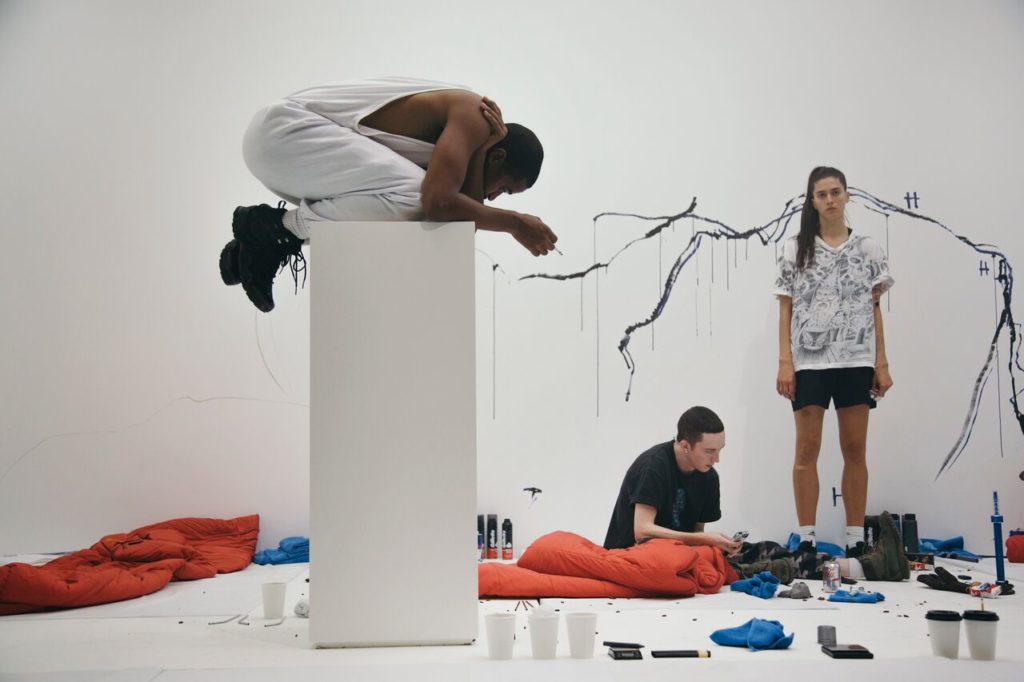
See who made our list this year.

Hettie Judah

Welcome to part two.
This list is arranged alphabetically (no hierarchies here!) so you’re looking at a group of artists simply ordered from I to W. Yet placing a number of apparently random entities into a loose grouping, as we’ve all had opportunity to discover in recent years, can yield unexpected associations. Somehow Part II feels texturally different to Part I
There are new forms entering the art-world vocabulary and new tools entering its arsenal, from drones to algorithms to Blockchain; in selecting the artists on the list we’ve tried to separate significant innovation from mere novelty. But old themes, old subjects keep bubbling through: humanity’s relationship to the natural world, obsessions with youth and beauty, the female body, weightlessness, dance, shamanic ritual.
Artists on this list have been asking awkward questions: what is their “job description” in the new networked, access-hungry era? Where is the space for representation of family and motherhood in a visual culture mesmerized by eternal youth? How do you put a monetary value on an artwork?
Concerns over art as a rarefied pursuit, open only to those with the wherewithal to pay for tertiary education and support themselves through a career fraught with financial precarity, have driven some artists on this list to set up parallel institutions and to make lectures and essays widely available. They have already played a role in shaping this list, and we hope they will continue to do so for many years to come.
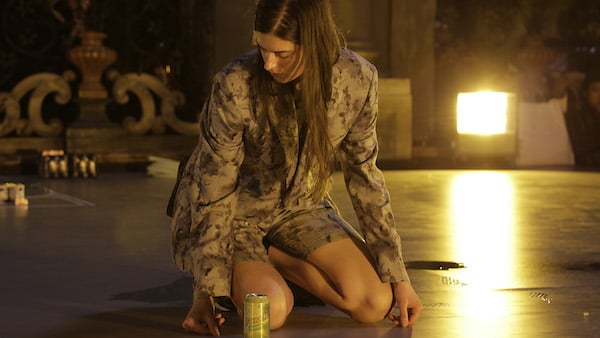
Anne Imhof, RAGE 4th of at least three (2015). Courtesy of photographer Nadine Fraczkowsk, the artist, and the Montreal Biennial.
26. Anne Imhof (Born 1978, Gießen, Germany. Lives and works in Frankfurt)
Since having won the Nationalgalerie Prize for Young Art in 2015, Imhof’s ascendance has been stellar: her tripartite opera “Angst” managed to be a highlight of the institutional shows around Art Basel, Berlin Art Week, and, latterly, the Biennale de Montréal. What next for Imhof’s nocturnal, normcore-clad and creature touting team? Next summer she represents Germany in a Susanne Pfeffer-curated show at the Venice Biennale.
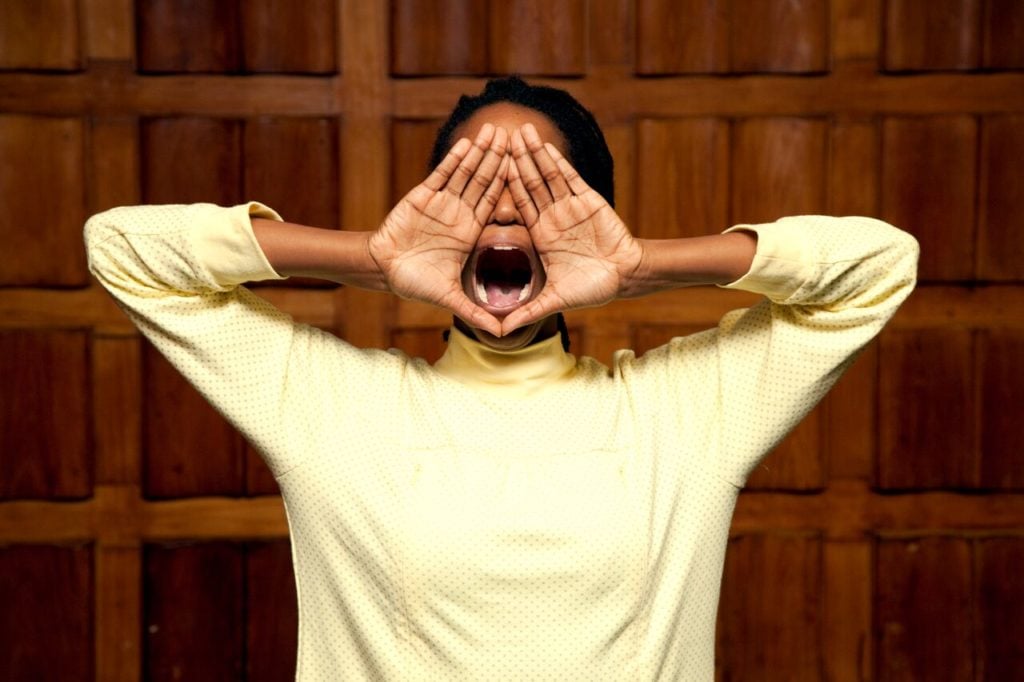
Sarah Browne and Jesse Jones, The Touching Contract (2016). Installation view at Toynbee Studios with performer Yinka Esi Graves. Photo by Miriam O’Connor. Courtesy the artists.
27. Jesse Jones (Born 1978, Dublin. Lives and works in Dublin)
Feminist, agitator, miner of hidden histories: Jones made an impression in 2016, not least with her collaborative project (with Sarah Browne, and community organizers and activists) “In the Shadow of the State,” a complex work touching on issues from state control over women’s bodies, to the wording of official contracts, to our awkwardness toward physical contact. At the Dublin City Gallery she called on a cast of collaborators including composer Gerald Busby to create a “Feminist Parasite Institution,” exploring the historical representation of women. So, will she go easy, politically, when she steps up for Ireland at the Venice Biennale next year? With a proposal that includes the exploration of “national representation at Venice as an alternative site of the state,” we’re guessing not. Brace yourselves.
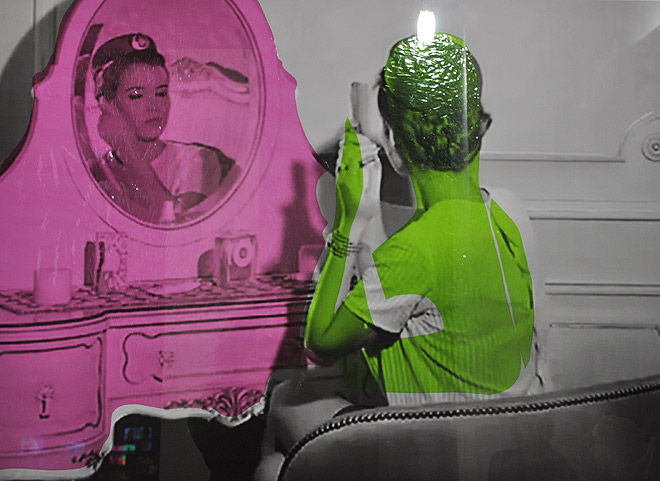
Hiwa K, My Father’s Colored Period,. Courtesy the artist
28. Hiwa K (Born 1975, Sulaimaniya, Iraq. Lives and works in Germany)
Possibly the only artist on this list to have studied Flamenco (under the mighty Paco Peña, no less), Hiwa K takes the unconventional route in to art-making, from music, through oral histories to pragmatic acts of making. He was winner of both Kassel’s Arnold Bode Prize and the Schering Stiftung Art Award this year, which means that in 2017, Mr. K will get a solo outing at KW (Berlin) and be a major presence during Documenta 14.
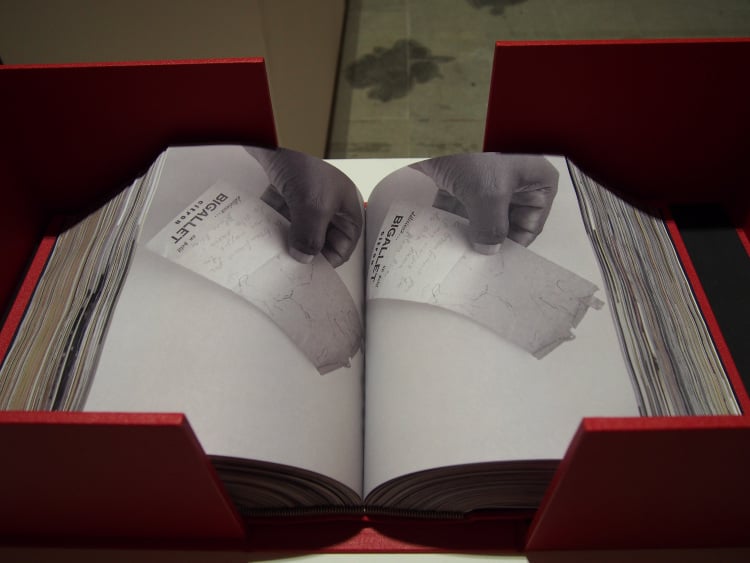
Sanguinetti Theses, detail at Venice Biennale 2015. Courtesy the artist.
29. Samson Kambalu (Born 1975, Malawi. Lives and works in London)
Shown as part of Frieze London’s film program, the Liverpool Biennial, and now at NSU Art Museum Fort Lauderdale, Kambalu’s jumpy, black and white, silent “Nyua” films, shot in and around existing sites and situations, have a surreal and transgressive charm—but the artist has deeper concerns. As his solo show at Kate MacGarry in London revealed, Kambalu has been sued by the Italian Situationist Gianfranco Sanguinetti for the work he made (at Venice in 2015) using copies of his archived papers. Kambalu’s original display was an anarchist gesture against the capitalist exchange of documents relating to the Situationist International, so winning the case against Sanguinetti rendered him the first “situationist” artist to be “defended by the government and not persecuted by it.”
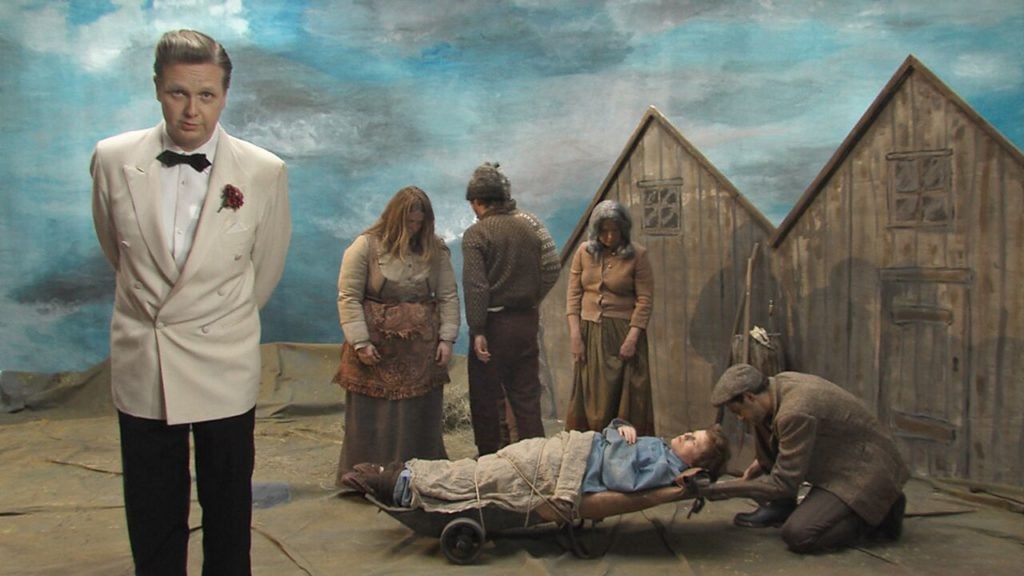
Ragnar Kjartansson, World Light, Installation view, Luhring Augustine Bushwick, New York. ©Ragnar Kjartansson; Courtesy of the artist, Luhring Augustine, New York, and i8 Gallery, Reykjavik
30. Ragnar Kjartansson (Born 1976, Reykjavík. Lives and works in Reykjavík)
Well, how much do you need to know? Kjartansson effectively owned 2016. He’s topping out the year with a mid-career survey at the Hirshhorn Museum in Washington DC (co-produced with Barbican in London, where a version ran over the summer), two large video installations in the inaugural program of Copenhagen Contemporary, and a show across both spaces of his NY gallery Luhring Augustine. Over the course of the year he’s had institutional solos in Massachusetts, Tel Aviv, Montreal, Chicago, Buffalo, and Detroit, and still found time to participate in Artangel’s project in Reading Gaol, and the Volcano Extravaganza on Stromboli. Proving he’s still a hometown boy at heart, Kjartansson looked happiest when he was awarded Reykjavik City Artist back in the summer.
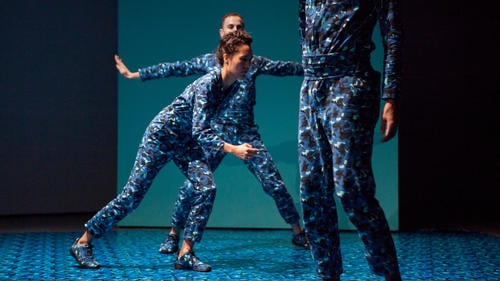
Adam Linder, Kein Paradiso (2016) at “Made in L.A. 2016: a, the, though, only.” Courtesy of the artist/photographer Shahryar Nashat.
31. Adam Linder (Born 1983, Sydney. Lives and works in Berlin)
Ploughing the fertile territory between art and dance, Linder’s zero-hours-contract performance series Choreographic Services expanded into a fourth iteration (Some Strands of Support) this year: all have received outings in both gallery and theatrical contexts, including the Schinkel Pavillon, Liverpool Biennial, and 20th Biennale of Sydney. In June, Linder’s Kein Paradiso had a run at the Hammer in LA, following which he was announced as the recipient of the $100,000 Mohn Award honouring artistic excellence. As for next year: you’ll find Linder at Kampnagel Hamburg, Sadlers Wells London and Kunsthalle Basel.
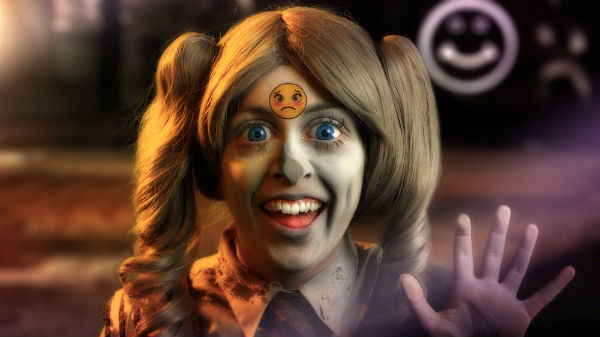
Rachel Maclean. Still from “Feed Me.”
32. Rachel Maclean (Born 1987, Edinburgh. Lives and works in Glasgow)
A critical and audience favourite for some years now (Feed Me—a 60 minute film riffing on the fetishisation of youth, and social media discourse—is a highlight of the British Art Show), as we come to the end of 2016, Maclean has gone stratospheric. Nominated for a Jarman Award in June, her inclusion in the Frieze Film program was a gentle run up to a major show at HOME in Manchester, a display at Tate Britain, and the announcement that she would represent Scotland in Venice next year.
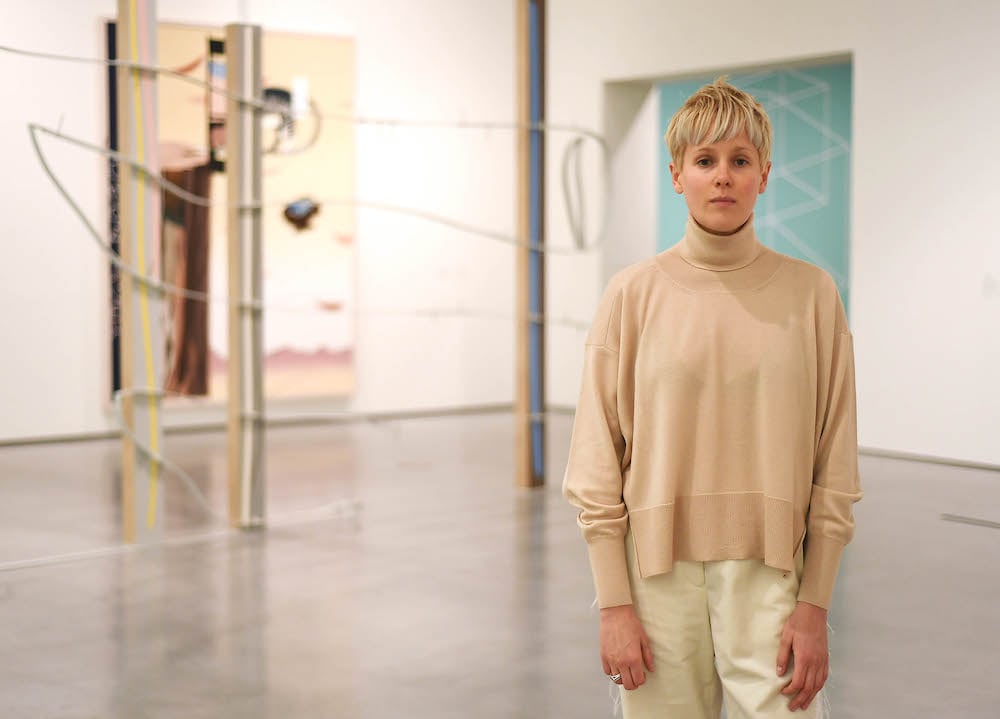
Helen Marten, winner of the inaugural Hepworth Prize for Sculpture with her artwork at The Hepworth Wakefield Gallery in West Yorkshire. Photo Anthony Devlin/PA Wire.
33. Helen Marten (Born 1985, Macclesfield. Lives and works in London)
“The hierarchical position of art prizes today is to a certain extent flawed,” Marten protested on British radio after winning the Hepworth Prize for sculpture. To celebrate or commiserate, then, with Marten, who besides winning the inaugural Hepworth, is also a hotly tipped nominee for this year’s Turner Prize? An exhibition in the Serpentine Sackler Gallery gave her three simultaneous major institutional exhibitions in the UK alone in the second half of this year. Marten put her (prize) money where her mouth was, incidentally, and will split the Hepworth pot with fellow nominees.
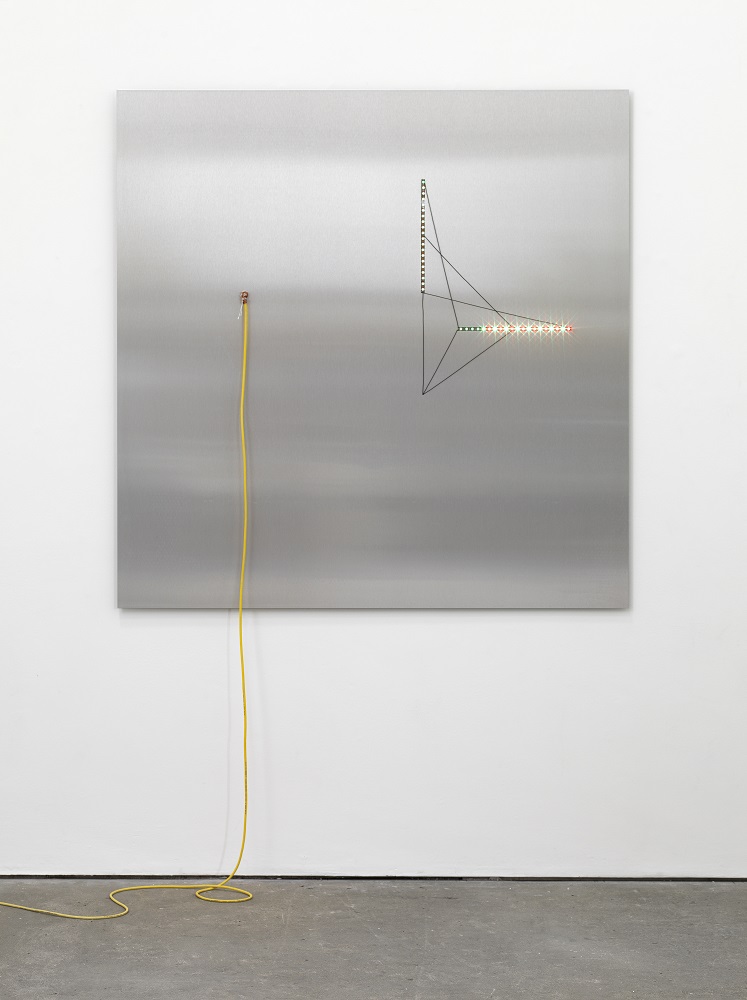
Haroon Mirza Self Transforming Machine (LED Circuit Composition 18), (2016). Courtesy © Haroon Mirza; Courtesy Lisson Gallery
34. Haroon Mirza (Born 1977, London. Lives and works in London)
To those of us stuck in Europe, Mirza may have seemed uncharacteristically quiet this year, but that’s because his transmitters have been turned a little further afield, to exhibitions at Pivô in São Paulo, the Ghebaly Gallery in LA, and the ArtReview Asia-curated Xiàn Chăng exhibition programme at the West Bund Art & Design fair in Shanghai. He’ll be back though: notably as the recipient of the Zabludowicz’s annual commission for 2017.
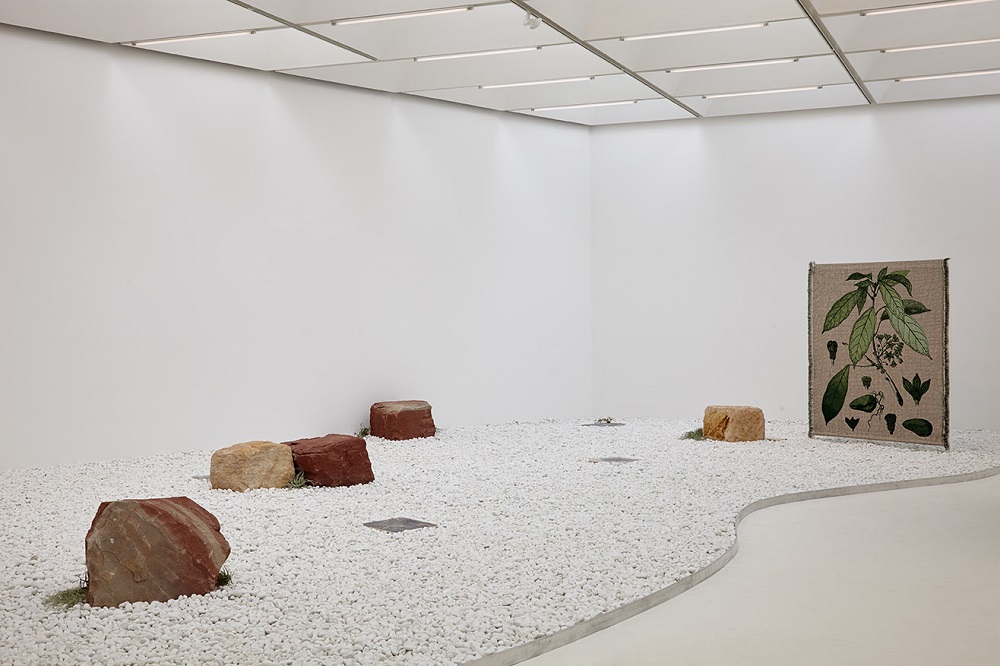
Otobong Nkanga, “The Encounter That Took a Part of Me,” (2016) exhibition view, Nottingham Contemporary. Photo: Stuart Whipps
35. Otobong Nkanga (Born 1974, Kano, Nigeria. Lives and works in Paris and Antwerp)
Nkanga’s multifaceted installations are pretty specific to time and place, and lately have involved the presence of participants as an animating factor: not something you can easily box up and ship around hither and yon. Major outings and undertakings in 2016 have included Landversation Beirut at Beirut Art Center and The Encounter That Took a Part of Me at Nottingham Contemporary, which will transfer to Kunsthal Aarhus in 2017 as part of the city’s programme as European Capital of Culture. In the meantime, Nkanga has a double header with Georges Adéagbo opening this weekend at Lumen Travo in Amsterdam.
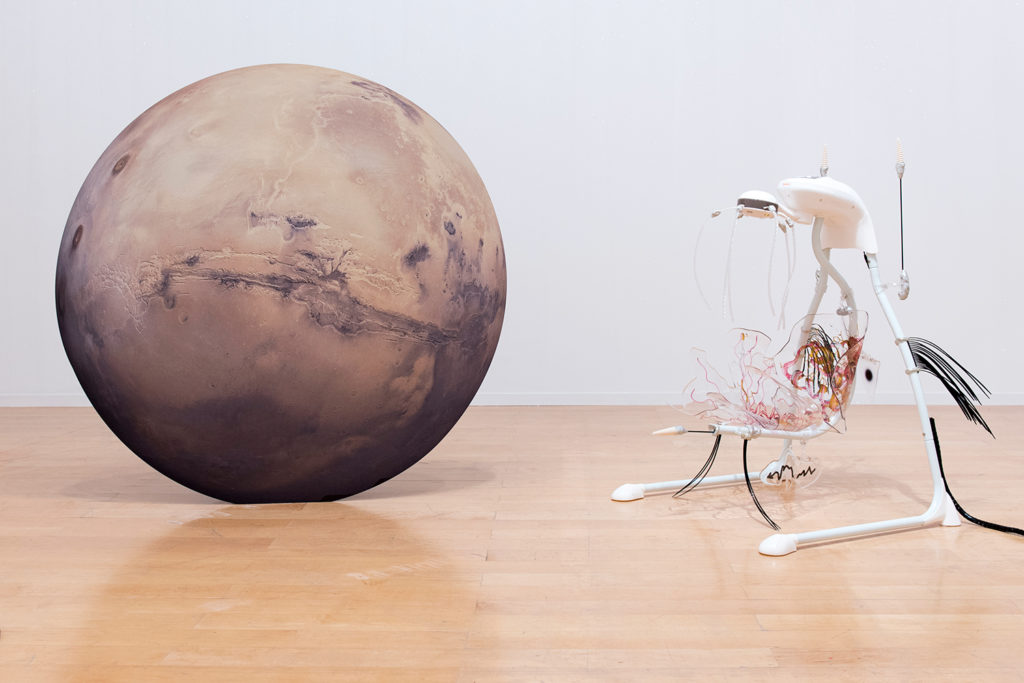
Katja Novitskova, Pattern of Activation (panetary bonds), (2015), Detail. Exhibition view at the 13 Biennale de Lyon. courtesy the artist and Kraupa-Tuskany Zeidler, Berlin
36. Katja Novitskova (Born 1984, Tallinn. Lives and works in Berlin and Amsterdam)
Ahead of representing Estonia at the Venice Biennale, Novitskova is, as of this week, receiving her first US solo show courtesy Greene Naftali in New York, populated with cut outs of magnified, or heat-sensed creature images “mined” from the Internet, and robotic sculptures with laser eyes. Novitskova’s disturbing animal image world also populated the Kunstverein Hamburg and the European School of Management and Technology in Berlin during the city’s Biennale this past summer.
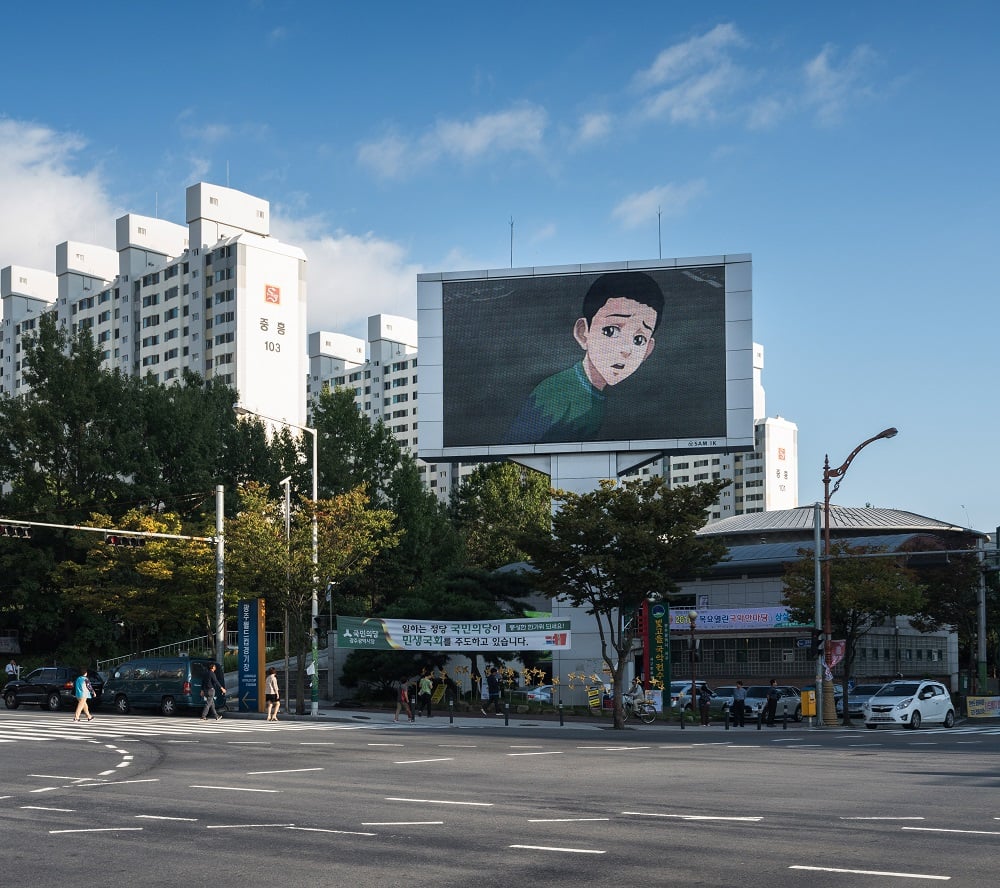
Ahmet Öğüt, United, (2016), two channel HD animation. Commissioned by 11th Gwangju Biennale Foundation. Produced in collaboration with JM Animation Co. Supported by Mondriaan Foundation and Saha Association. Courtesy of the artist. Photo: Doyun Kim
37. Ahmet Ögüt (Born 1981 Silvan, Diyarbakir. Lives and works in Amsterdam and Berlin)
We could focus on his solo shows (ALT Bomonti, Istanbul; Galerie Wedding, Berlin) or his ubiquity at biennials and other big art bunfights (Gwangju, Okayama, Manifesta…), but in a year dominated by crises surrounding migration, let’s take a moment to focus on The Silent University. Initiated by Ögüt in 2012, this solidarity based knowledge-exchange platform for and with refugees, asylum seekers, and migrants has grown and evolved. Collaborating institutions in 2016 included Tensta Konsthall, ABF Stockholm, Impulse Theatre Festival, Ringlokschuppen Ruhr, Urbane Künste Ruhr, and the Spring Sessions in Amman, with courses ranging from the practical (How to set up Your Own Business) to the academic (Herodotus and The Civilization of Medes). Should you want to drop his name in conversation (and who wouldn’t?) remember kids: like his University, the ‘g’ is silent.
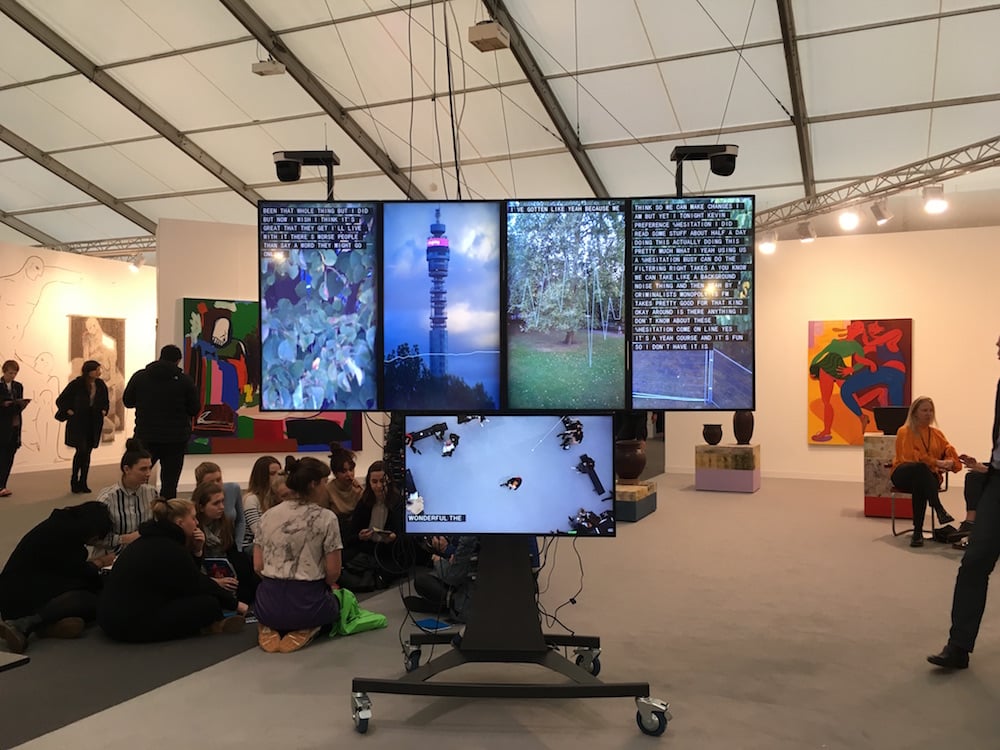
Install view of Frieze Project “Crisis Trolley” (2016) by Frieze Artist Award Winner Yuri Pattison. Photo: Skye Arundhati Thomas.
38. Yuri Pattison (Born 1986, Dublin. Lives and works in London)
Pattison’s new solo show at mother’s tankstation limited in Dublin caps off a busy year. The recipient of the 2016 Frieze Artist Award (with work displayed in public areas of the fair) also showed the fruits of his eighteen-month Create-backed residency at Chisenhale over the summer. Linking the East End creative scene to its tech hub, Pattison went beyond the gallery to install sculptures with interactive elements (such as a bitcoin mining rig that monitors online transactions and accumulated capital) at sites associated with tech startups and hacker groups. Further afield, his work has also cropped up in group shows in Tokyo, Moscow, Leeds and Dortmund, Perth, Paris, Vienna, and Düsseldorf.
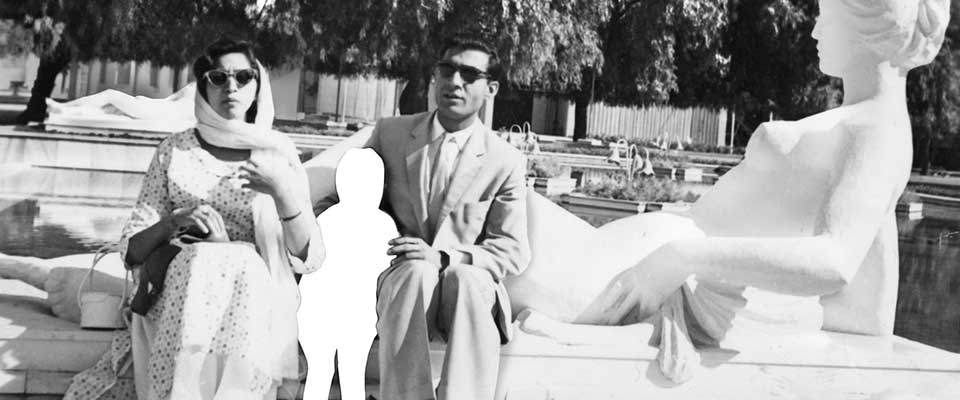
Ibrahim Quraishi, from the series “Family Portraits.” Courtesy the artist.
39. Ibrahim Quraishi (Born 1973, Nairobi. Lives and works in Amsterdam)
Already in residence in Kerala in the run up to the Kochi-Muziris Biennale, Quraishi’s juggling an armful of ambitious ongoing projects as we approach the turn of the year. Slated for release next year is VREEMD LAND, HOLY MAMA a film inspired by the artist’s encounter with Kurdish Woman’s Resistance Fighters in Rojava. He will also continue to work on a series of paintings Martyrs & Idols, and the mixed media AN DER GRENZE ZUM FIASKO. His two-screen video of drone footage shot in the Middle East and Arabian Peninsula RADIUS 1 & RADIUS 2 was shown earlier this month at Galerie Crone Berlin. At Lumen Travo in Amsterdam this fall, meanwhile, Lost Codes, a performance work with participants that had experienced migration, explored the mental transportation of things left behind.

Johannes Paul Raether. Photo courtesy the artist and Cycle Festival.
40. Johannes Paul Raether (Born 1977, Heidelberg, Germany. Lives and works in Berlin)
What was it that caught our eye: The intense blue face paint? The latex bodysuit with integral hotpants? The fetish harness covered in warped selfie sticks? Or getting the Apple Store evacuated and shut down after an environmental protest performance was misinterpreted as an act of terrorism? Raether’s shamanic, pagan, and Sci-Fi inflected appearances as the witch Protectorama (among others) have “expanded consciousness” about the mining of rare metals, our addiction to iPhones, and other, less, tangible aspects of modern life this year in Europe and beyond.
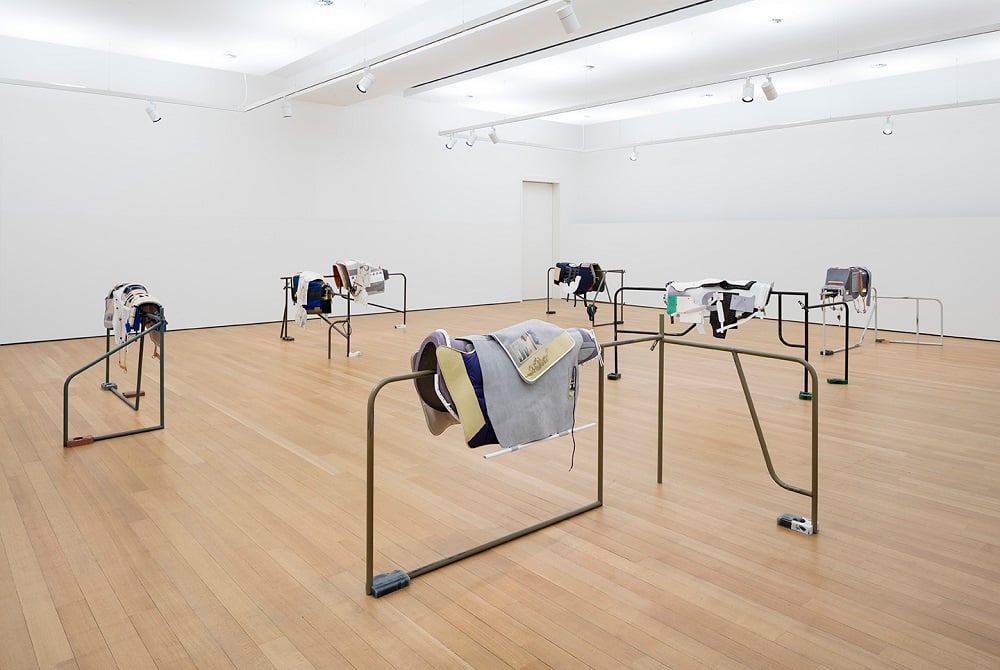
Magali Reus, Mustard, Stedelijk Museum Amsterdam. Courtesy The Approach, London, and Stedelijk, Amsterdam.
41. Magali Reus (Born 1981, The Hague. Lives and works in London)
Any institution wanting to take Reus for a spin in the next few years be warned: this artist’s dance card is already getting filled up, with solo shows at the Bergen Kunsthall and Kunstmuseum St. Gallen already in the offing for 2017, and the Nasher Sculpture Center the following year. This year Reus’s cutabout locks, built structures and enigmatic machines have been the focus of exhibitions at The Stedelijk Museum Amsterdam and Fondazione Sandretto Re Rebaudengo, Turin. During Miami art week, her works will be on show in a display of recent acquisitions at the Rubell Family Collection in Miami.
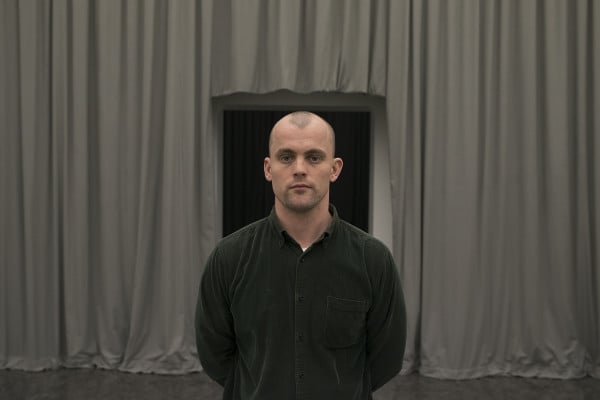
James Richards. Courtesy Arts Council of Wales.
42. James Richards (Born 1983, Cardiff. Lives and works in London)
We could probably have spent the rest of 2016 hanging out in Richards’s complex sound collage installed downstairs during his institutional takeover Requests and Antisongs at ICA, but alas the show finished earlier this month. We’ll just have to hang on for Venice, then, when the archive-digging, cut-n-pasting sound and video artist will represent Wales during next year’s Biennale.
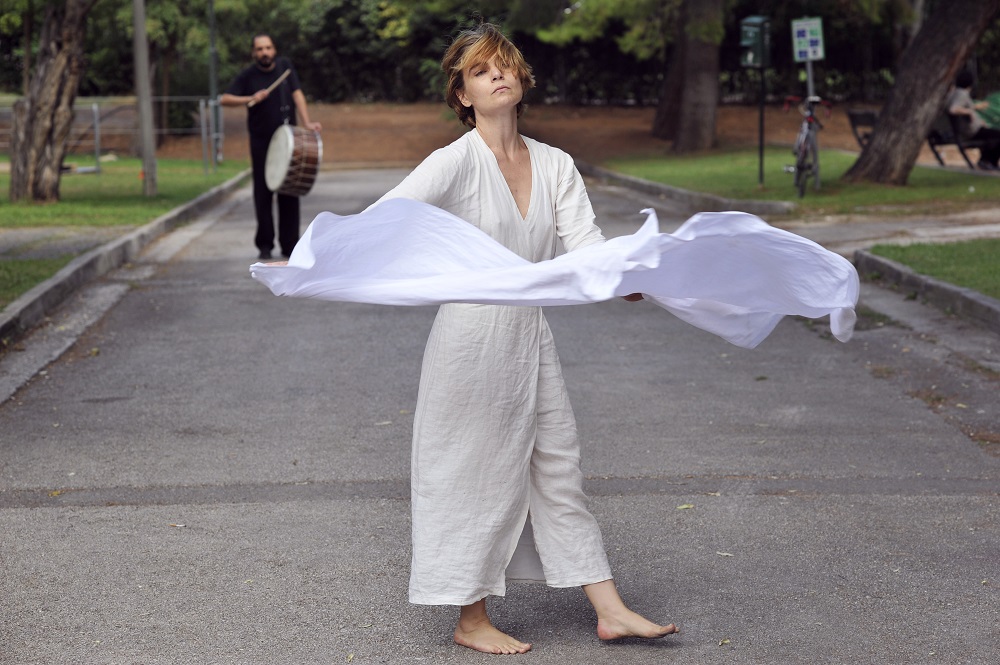
Georgia Sagri, Attempt Come, (2016), 20 hour performance (performance view during Excercises of Freedom, documenta 14: Public Programs) Courtesy the artist and Anthony Reynolds Gallery, London. Photo Stathis Mamalakis
43. Georgia Sagri (Born 1979, Athens. Lives and works in Athens and New York)
In a politically tricky edition of Manifesta 11, Sagri was notably the artist that cut to the quick and identified the cause of a number of tensions surrounding the biennial, notably the number of new labors now contained within the job title “artist” (documentary subject, self promoter, website designer, social media campaigner…) and how these might be appropriately remunerated. When not asking difficult questions, 2016 has also seen Sagri perform at the Sculpture Centre NY, and, in September, present a 24-hour performance as one of the “34 Exercises of Freedom” that opened the public program of Documenta 14 in Athens.
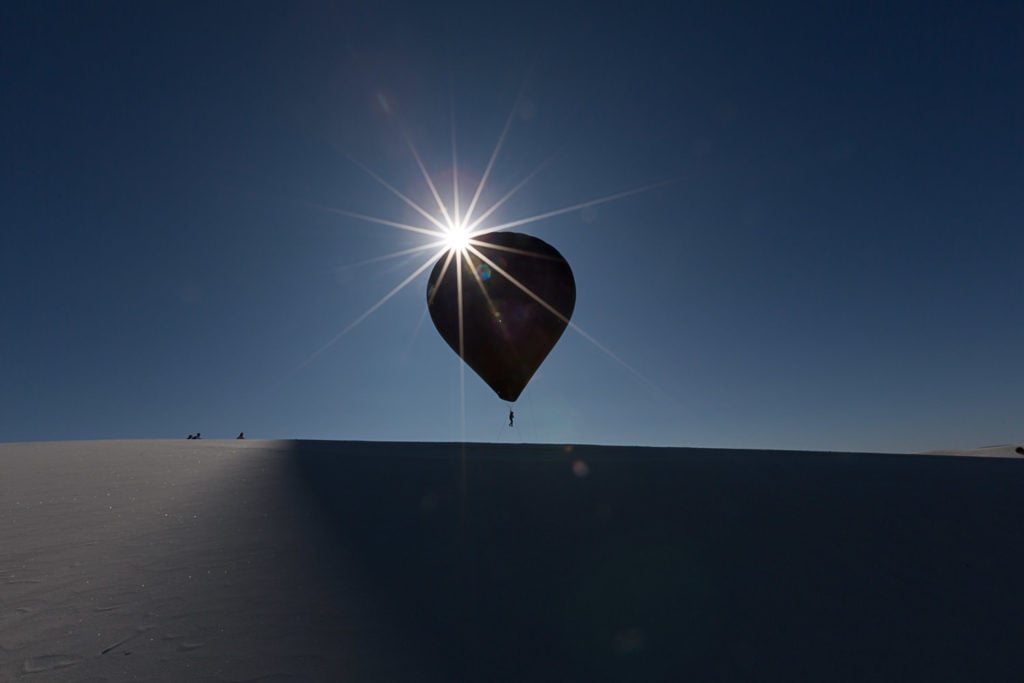
A 2015 iteration of the Aerocene Explorer. Photography by Studio Tomás Saraceno, © 2015
44. Tomás Saraceno (Born 1973, Argentina. Lives and works in and beyond the planet Earth, with a studio in Berlin)
After their spectacular Aerocene floating spheres were presented at the United Nations Climate Change Conference COP21 in late 2015, the Saraceno Studio has been busy putting out images of the further adventures of the Aerocene (in Cappadocia as part of Cappadox, and taking a free flight from Berlin to Poland) in the run-up to COP 22. Saraceno’s been buzzing around himself at a somewhat faster pace, taking in Serpentine’s Miracle Marathon, the Shanghai Biennial, and an exhibition at MARCO in Mexico. On the horizon: Stillness in Motion – Cloud Cities at SFMoMA, opens at the end of this year and there are upcoming solo shows at Wilhelm Hack Museum in Ludwigshafen, the Museum of Modern Art, Buenos Aires in the spring, and Palais de Tokyo in 2018.

Lina Selander with Oscar Mangione, The Ceremony (2016), (installation view, Göteborgs Konsthall.) Photo Fredrik Åkum, GöteborgsKonsthall
45. Lina Selander (Born 1973, Stockholm. Lives and works in Stockholm)
For a filmmaker, and a Scandinavian one at that, This Misery of Light is a pretty arch title, but thusly goes Selander’s current solo outing at Göteborgs Konsthall. Following her show in the Swedish pavilion at the 2015 Venice Biennale, Selander’s had a breakneck year, and things don’t look to be slowing down for 2017: already on the cards are solo exhibitions at the Oslo Kunstforening, Art Initiative—Stockholm School of Economics, and ARGOS in Brussels.
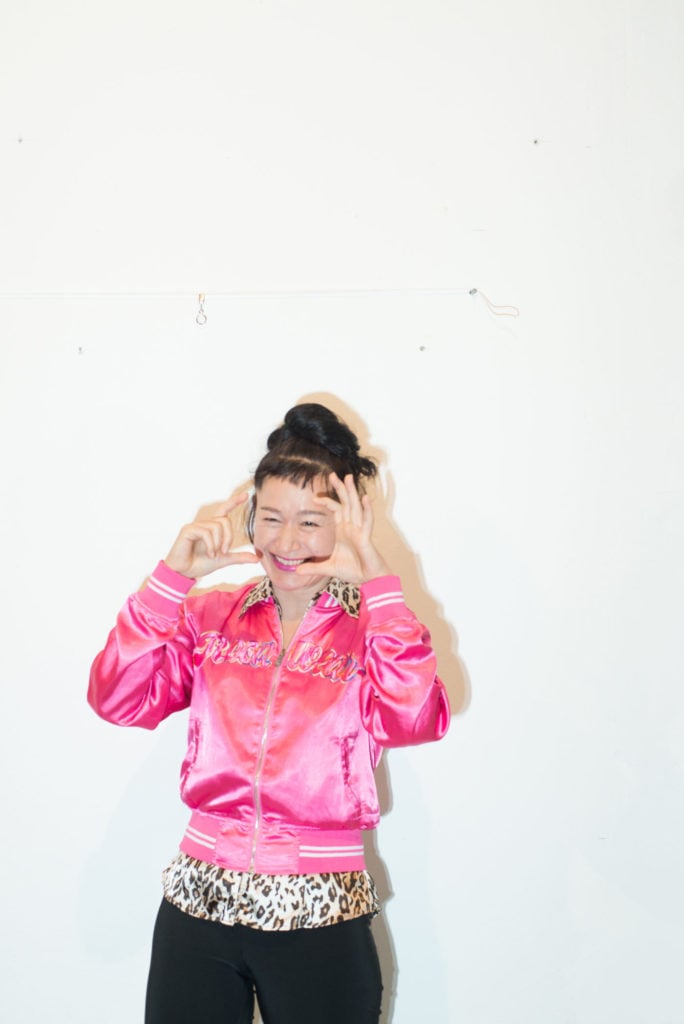
Hito Steyerl. Photo by Tobias Zielony. Courtesy of Andrew Kreps and the artist.
46. Hito Steyerl (Born 1966, Munich. Lives and works in Berlin)
A nominee for this year’s Artes Mundi prize (who took herself off the shortlist), as ever this year, Steyerl’s impact on the art world has been as much about what she’s said, done, and written as it is about the work that she’s made. One observer noted that a large tranche of the participants in this year’s Berlin Biennale were influenced by Steyerl, whether via her formal teaching roles, or her writings for e-Flux journal and lecture performances. It’s not all about being “Fucking Didactic” though: following its debut in the German Pavilion at Venice in 2015, her installation Factory of the Sun has shown at MOCA, LA, and HMKV, Dortmund and she’s been in a starry roster of institutional group shows (including the new hang of Tate Modern) and biennials.
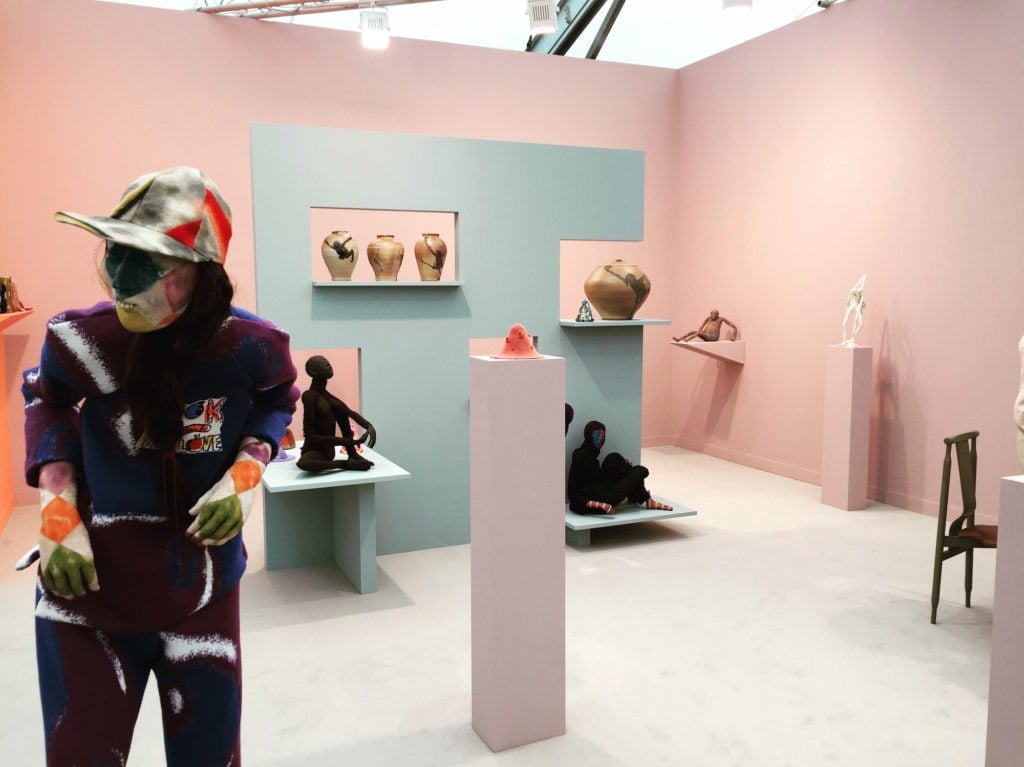
Solo presentation by Francis Upritchard at the Kate MacGarry booth at Frieze London 2016. Photo Lorena Muñoz-Alonso.
47. Francis Upritchard (Born 1976, New Plymouth New Zealand. Lives and works in London)
You can be cynical about Instagram, sure, but sometimes it’s hard to ignore the sheer adoration afforded the work of certain artists. Witness the wave of images of Upritchard’s quasi-ethnographic coloured clay sculptures that overran the Kate MacGarry stand at Frieze London 2016. This year she’s been pretty busy in the southern hemisphere (solo shows in Wellington, Auckland and Melbourne), so perhaps the outpouring of enthusiasm was just a reminder of how much London loves this New Zealand import? And for when Instagram’s not enough, Upritchard has collaborated with Peter Pilotto on next season’s collection.
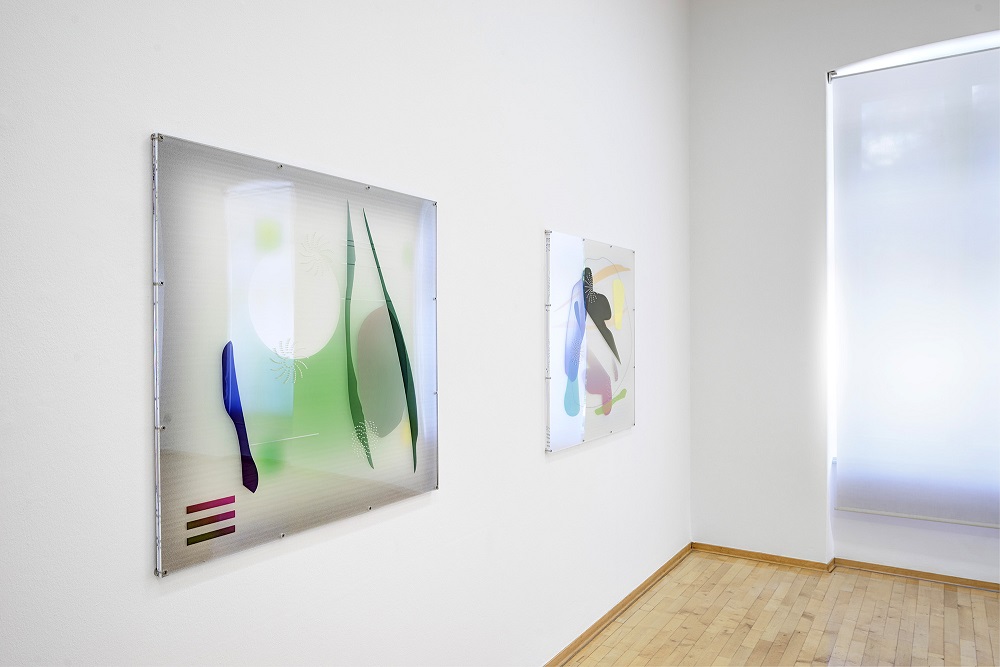
Harm van den Dorpel Wer nicht denken will, fliegt raus (2016), exhibition view, Museum Kurhaus Kleve. Courtesy Neumeister Bar-Am, Berlin.
48. Harm van den Dorpel (Born Zaandam, The Netherlands. Lives and works in Berlin)
In 2015 Harm van den Dorpel hit the headlines as the first artist to have a work acquired by a museum in Bitcoin, and he’s not stopped testing art world limits in 2016. In March, Deli Near Info—a social media network on which “distinctions between navigation and content are suspended”—won the Net-Based Prize at the House for Electronic Arts in Basel. In, we assume, a comment on choice as an art form in itself, his project Death Imitates Language used an algorithm to learn and evolve to reproduce the artist’s aesthetic taste, generating combinations of layered colour and form (“pictures” in other words) that the artist might have made himself.
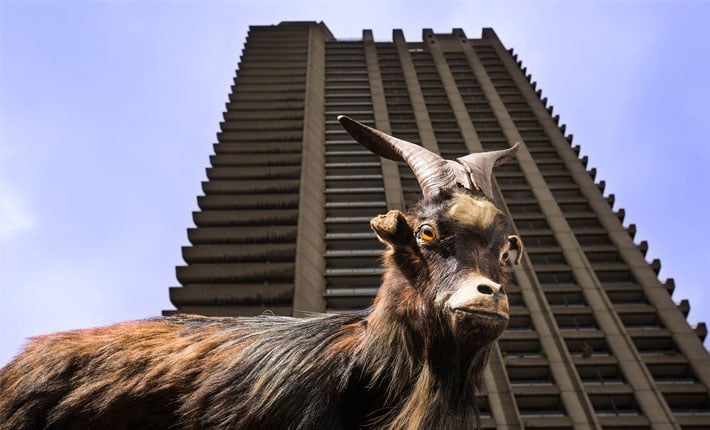
Bedwyr Williams, Visual for the show “The Gulch”, at the Barbican. Courtesy the artist
49. Bedwyr Williams (Born 1974, St Asaph, Wales. Lives and works in Caernarfon)
Williams’s goat is all over the London Underground at the moment: he’s wheeling the stuffed ruminant on a poster commissioned by the transport network to coincide with The Gulch, his “takeover” installation in the Barbican’s Curve space. Currently showing in Cardiff as a nominee for the Artes Mundi prize, in 2017 Williams will present “ECHT” at Fondazione Sandretto Re Rebaudengo. The goat (which also has a starring role in The Gulch) really puts the field back into leftfield: territory Williams seems particularly happy occupying.
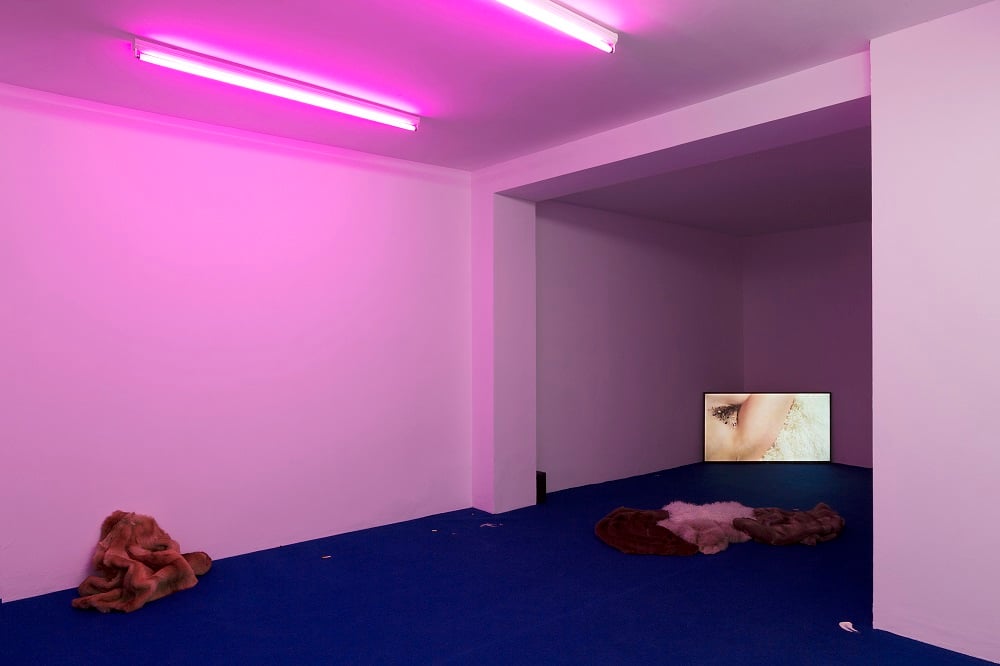
Zoe Williams, DzPeldz (2015-16), (exhibition view, Antoine Levi, Paris). Courtesy the artist and Antoine Levi, Paris. Photo Claire Dorn
50. Zoe Williams (Born 1983, Salisbury, UK. Lives and works in London)
Returning, should you wish, to the very top of this list, it might interest you to note that Williams is among the artists to have taken up a residency at Aaron Angell’s Troy Town Art Pottery. Not that Williams feels committed to ceramic: while it features in Tender Touches (currently at the Austrian Cultural Foundation in London) the main event seems to have been a distinctly sculptural “ceremonial gateau” served during the private view. Sensuality is an abiding theme: there was bodyhair and fur a go-go in “Pel,” her solo show at Antoine Levi, Paris, and more of it in her Châteaux Double Wide project lightboxes. We don’t yet know what 2017 has in store for Williams, but it’s unlikely to be staid.